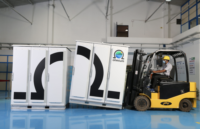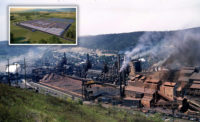
Israel has launched a two-year program to make its Jerusalem parliament building, known as the Knesset, the world's greenest with a host of new sustainability measures that include the installation of a 4,650-sq-meter rooftop solar-panel array.
Samuel Chayen, a government spokesman, said in a press report that the solar field will be larger than the current record-holder: a 3,600-sq-m array atop Germany's Reichstag building in Berlin that houses its governing Bundestag.
The Knesset's solar field will be able to generate 510,000 kilowatt-hours of electricity and save an estimated 5% of annual power costs, officials said in a Jan. 1 statement. The panels are among more than $2 million in planned energy- and water-saving measures for the building, which dates to the mid-1960s.
These moves include replacing the building's air-conditioning and sprinkler systems with an energy center; desalination and recycling of air-conditioning condensation and other water, to be used for outdoor irrigation; more efficient lighting; automatic, end-of-workday shutdown of computers and other systems; and new water- and energy-use modeling approaches.
One published report says use of air-conditioning heat emissions could reduce natural-gas consumption by 50% and that recycling water for irrigation could cut the Knesset's 20,000-cu-m annual water use by 20%.
Officials say the steps will save more than $430,000 in annual building water and energy costs after the first five years. Knesset Speaker Yuli Edelstein, one of the program's key champions, said the "significant investment would bear fruit." Environment Minister Amir Peretz added, "The symbol of the country must become a leading element in the green revolution." The Reichstag has reportedly cut its carbon emissions by 94% since the late 1990s.





Post a comment to this article
Report Abusive Comment